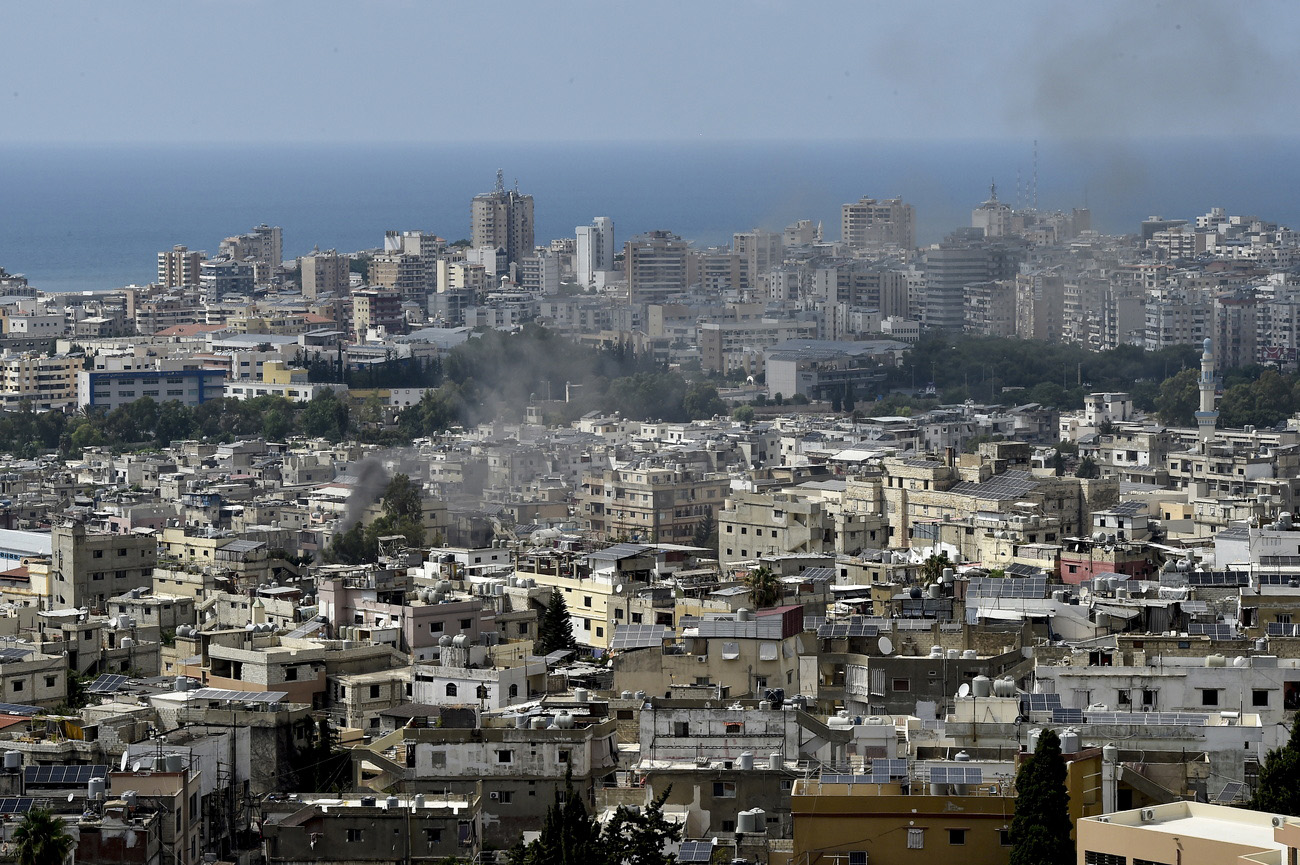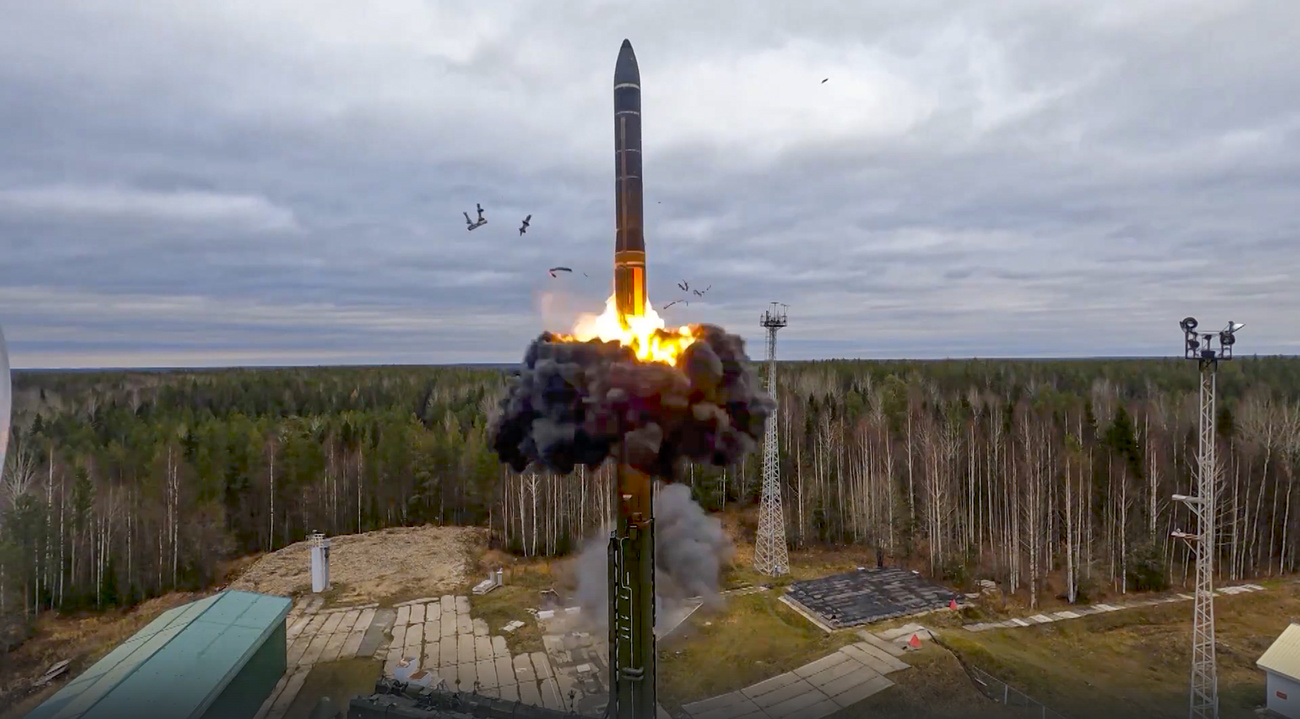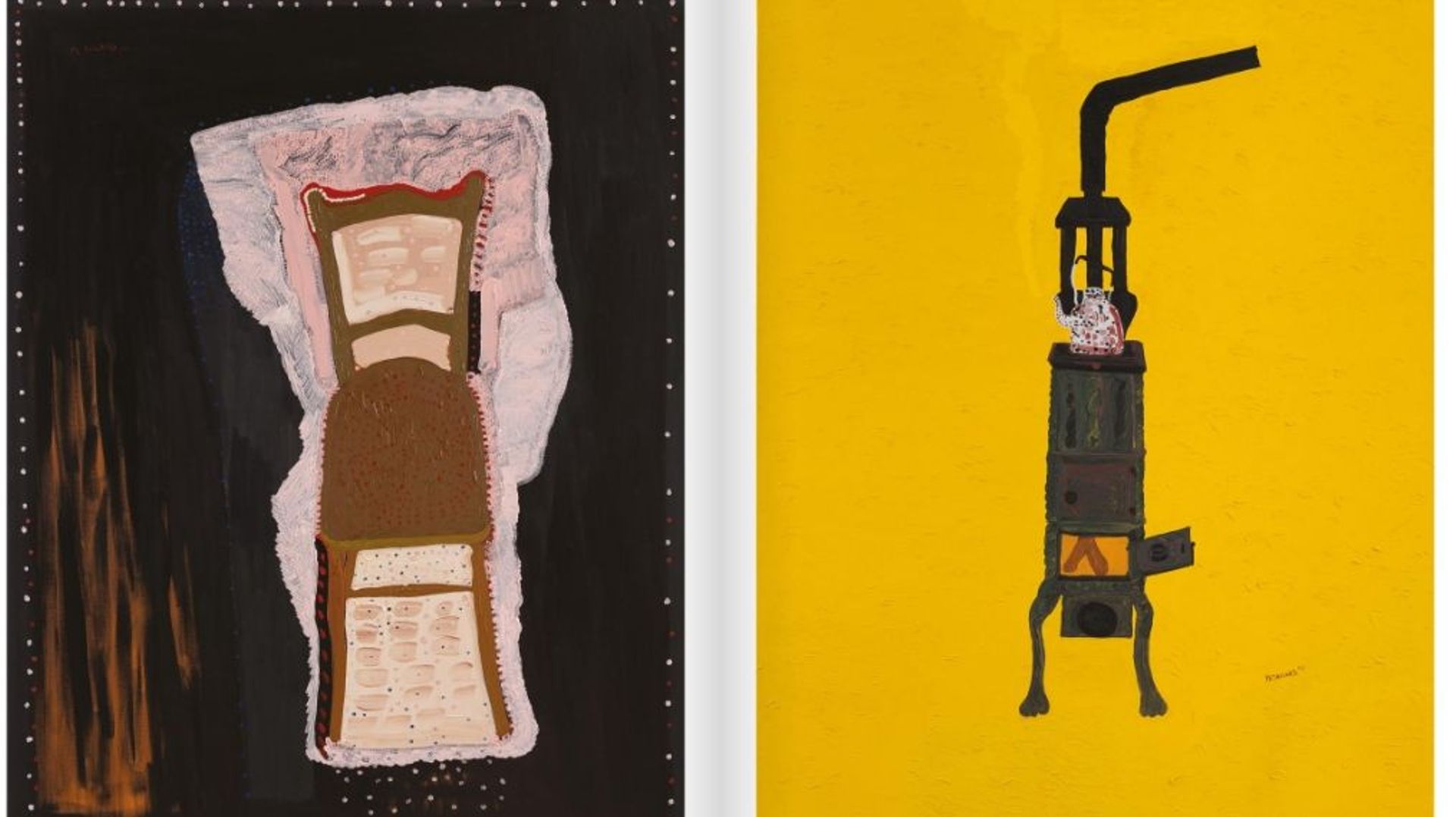
Threat of nuclear war paralyses International Geneva

The risk of nuclear warfare is at its highest point in decades, warns the UNExternal link. With Russia starting nuclear exercises near Ukraine and disarmament negotiations in Geneva at a standstill, the question arises: can diplomacy address such an existential threat?
“We have never been closer to a nuclear war,” says Marc Finaud, associate researcher at the Geneva Centre for Security Policy. Since the invasion of Ukraine, Russian President Vladimir Putin has repeatedly threatened to use nuclear weapons. On Tuesday the Russian army announced that it had begun military exercises on the use of tactical nuclear weapons near the Ukrainian border, in response to the potential deployment of NATO soldiers in Ukraine.
Amid this critical geopolitical context, the Conference on Disarmament (CD) resumed its work at the United Nations in Geneva for its second session of the year (May 13 to June 21). Established in 1979, the multilateral forum has been deadlocked since 1996, when it negotiated its last instrument, the Comprehensive Nuclear-Test-Ban Treaty (CTBT).
Negotiations at a standstill
“Nuclear states are blocking all disarmament advancement by abusing the consensus rule, which they use as a right of veto, even for approving the work programme,” Finaud says. As a result, since the turn of the millennium the conference has seen no substantial negotiations aimed at abolishing nuclear weapons.
These stalemates are fuelled by a lack of transparency, according to Susi Snyder, co-ordinator at the International Campaign to Abolish Nuclear Weapons (ICAN), a coalition of NGOs based in Geneva. She points out that the conference has not expanded its membership since 1982, systematically rejecting new members.
The Conference on Disarmament faces heavy criticism, notably from UN Secretary-General António GuterresExternal link. Has the forum lost its credibility? “The conference may lack productivity, but it does have the advantage of convening the nine nuclear powers around the same table,” argues Finaud, who worked for five years as a French diplomat at the CD.
While a ban on nuclear weapons is not on the agenda, the conference is tackling related subjects such as a ban on the production of fissile material, which is essential for manufacturing atomic bombs, and the “no first use” pledge, a policy wherein a state refrains from initiating the use of nuclear weapons during a conflict, he stresses.
Guterres cautions, however, that urgent reforms of the conference are necessary.External link In January, the United Nations Institute for Disarmament Research (UNIDIR) proposed measures to revitalise the conferenceExternal link, including holding accountable states that “use consensus as a veto power”, for example by requesting written justifications.
Treaty to ban nuclear weapons
Due to the deadlock, progress on disarmament is frequently achieved on the sidelines of the conference in Geneva. “A community of experts, forums and NGOs revolves around the Geneva conference. Since the end of the Cold War, all disarmament treaties have been initiated by civil society,” points out Marc Finaud.
This is the case of the Treaty on the Prohibition of Nuclear Weapons, initiated in 2017 by the ICAN coalition, which was awarded the Nobel Peace Prize. In force since 2021, the treaty explicitly bans nuclear weapons, including their production, possession, use or threat of use, and transfer. To date, 93 states have signed it and 70 have ratified it, but no nuclear power has joined its ranks (unlike the Treaty on the Non-Proliferation of Nuclear Weapons, which does not, however, outlaw atomic bombs).
Switzerland played a central role in the process leading to the adoption of the ban treaty. However, despite parliament voting in favour of the text, the government opted not to sign it.
Russia’s invasion of Ukraine has led Switzerland to strengthen its ties with defence alliance NATO, including by opening a liaison office in Geneva this year. However, this closer relationship has come at a price. According to the newspaper Le Temps, the “nuclear alliance” is putting pressure on Switzerland not to ratify the treaty banning nuclear weapons.
At the end of March, the government stated that joining the treaty was “not in Switzerland’s interest”, while simultaneously asserting that the use of nuclear weapons is incompatible with international law. It emphasised that achieving a world without atomic weapons could only be realised through cooperation with nuclear powers, thus underscoring the limitations of the ban treaty.
A regrettable decision, according to Marc Finaud, for whom the treaty has already made a significant impact, even in the absence of nuclear powers. “Within the states, parties, banks, companies, universities and individuals have had to renounce any cooperation that would contribute to the development of nuclear weapons, which limits the resources for producing bombs in the nuclear nations.”
When deterrence turns to intimidation
Another argument regularly put forward is the effectiveness of nuclear deterrence in preventing conflicts. But since the war in Ukraine, the rules have changed, notes Finaud.
“Initially, nuclear weapons were intended to maintain peace by deterring attacks, without them ever being used. Today, that paradigm has been shattered to pieces. Deterrence has failed to prevent wars from erupting in regions like the Middle East and Ukraine.”
On the contrary, nuclear weapons are being used to intimidate and coerce, observes Susi Snyder. The ICAN coalition, which she coordinates, has launched a people’s initiative calling on Switzerland to adopt the ban treaty.
Currently, there are over 12,500 nuclear weapons worldwide, the vast majority of which are in the hands of the United States and Russia. While negotiations in Geneva are stalling, technologies are constantly evolving, particularly with artificial intelligence.
“We are witnessing a new nuclear arms race. Weapons are becoming more modern, more powerful and quicker, which reduces the decision-making time for launching a nuclear attack,” Snyder says.
“Diplomacy has been overtaken by technology,” Finaud says. “To date, no declaration to regulate autonomous weapons has been translated into action.”
This unprecedented escalation raises fears of disastrous humanitarian consequences, with civilians as inevitable collateral victims.
“Even a limited nuclear conflict between India and Pakistan would provoke a ‘nuclear winter’ that would lead to a global famine killing two to five billion people, Finaud warns, referring to a study published in Nature in 2022.External link An inconceivable risk that society has lost sight of, he says. Yet never since the Cold War has the prospect of a nuclear conflict been so tangible.
Edited by Samuel Jaberg/ts. Translated from French by Rachel B. Häubi

In compliance with the JTI standards
More: SWI swissinfo.ch certified by the Journalism Trust Initiative































You can find an overview of ongoing debates with our journalists here . Please join us!
If you want to start a conversation about a topic raised in this article or want to report factual errors, email us at english@swissinfo.ch.